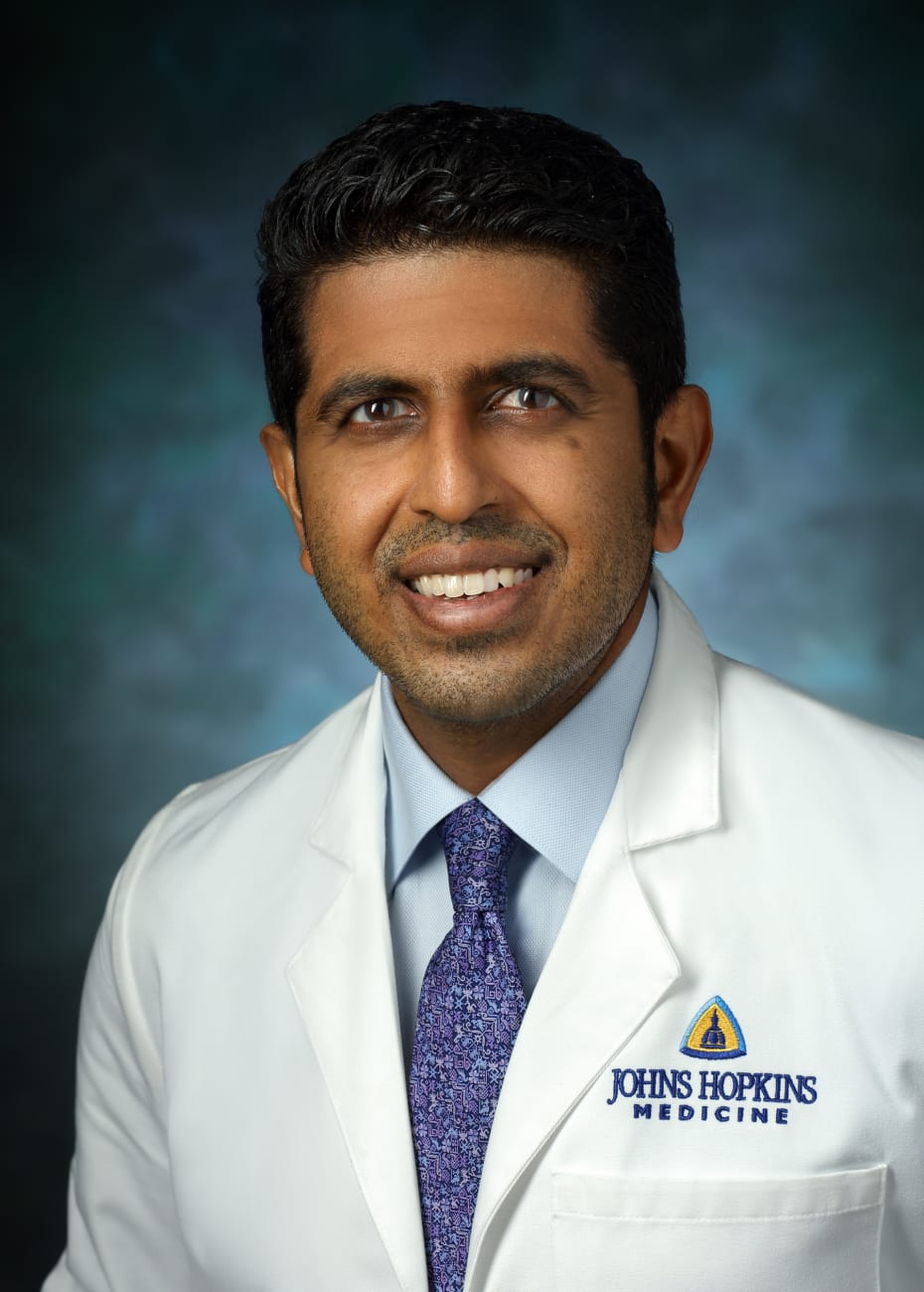
As the number of ambulatory surgeries increases, minimally invasive techniques are increasingly important options for patients with foot and ankle pathologies. Amiethab Aiyer, division chief of foot and ankle surgery in the Johns Hopkins Department of Orthopaedic Surgery, is offering the advantages of small-incision surgery — less pain, faster recovery and lower risk of wound-healing complications — to more patients in his practice.
Aiyer began using minimally invasive techniques in Achilles rupture repairs and forefoot surgeries while at the University of Miami. “The smaller incision can accomplish similar goals as open techniques, while also minimizing soft tissue disruption,” he says. “It has been a game-changer for my practice because it can save time, minimize pain and afford patients a quicker recovery.”
Aiyer sees using minimally invasive surgery as more of a philosophy than a specific procedure. In each patient’s case, he considers whether minimally invasive techniques and instrumentation are a viable option for accomplishing the necessary correction.
At Hopkins, Aiyer and his colleagues are attempting to expand the use of these techniques to address patients’ unique foot and ankle conditions. For a patient who had difficulty wearing shoes because of a prominent bone spur on the back of the heel, for example, Aiyer used the same instruments he uses in bunion and lesser toe corrections to surgically change the positon of the heel bone to offload the tissue that a heel spur would normally irritate.
He also takes a minimally invasive approach to complex cases, such as degenerative conditions of the Achilles tendon, flat foot reconstruction and fusion of bones in the foot, as well as in trauma cases involving midfoot injuries and calcaneal fractures. “Some of the same screws that are used to fix bunions minimally invasively can be used to fix midfoot injuries,” Aiyer explains, “because the design of screws lends itself to stabilizing those injury patterns.”
Subscribing to this philosophy comes with challenges. For example, the small incision prevents visualization of the entire surgical area. “You have to understand not just the feedback you get from the instrumentation onto your hands, but what to look for on radiographs in the OR and what challenges to be aware of,” Aiyer says.
The surgeon must also be able to identify patients who are appropriate candidates for this surgical approach. Aiyer speaks with his patients extensively about both the approach he proposes for their surgery and the risks involved so patients can make informed decisions about their care.
As minimally invasive instrumentation becomes more sophisticated, Aiyer believes there will be increasing opportunities to use minimally invasive approaches where other approaches have failed. For example, in patients with diabetes and resultant foot deformities, open surgery carries substantial risk of infection and impaired healing. For these patients, Aiyer evaluates the possibility of using minimally invasive reconstruction to improve their outcomes.
“There’s room to grow in terms of how we incorporate these techniques into our practices,” Aiyer says. “Being at an academic institution and having a curious mindset, we constantly evaluate current and novel techniques to identify what will ultimately help facilitate optimal patient care.”
Request an appointment: 443-997-2663.

